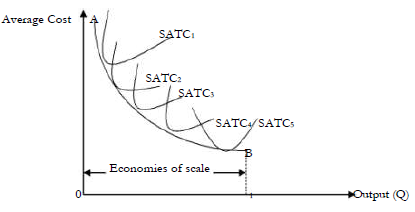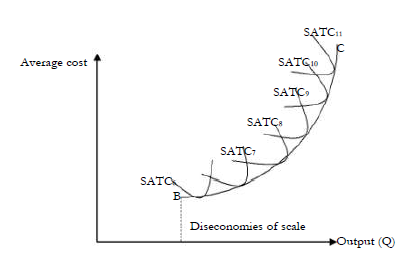Economies of scale are those aspects (factors)/benefits which reduce the unit cost of production as a
firm expands its scale i.e. one where additional proportionate (proportional) increase in all inputs results
in a more than proportionate increase in output. A firm enjoys full economies of scale at the lowest point
of its LR average Total Cost Curve (LATC). The diagram below shows a firm experiencing economies of
scale.

Arc AB shows a section of the long-run Average total cost (LATC) curve where the firm is
experiencing economies of scale.
Dis-economies of scale are those aspects/factors/disadvantages which tend to increase the unit cost of
production as the firm expands its scale of the plant. They accrue to a firm experiencing decreasing returns to
scale, i.e. one where successive proportional increase in all inputs results in a less than proportional increase in
output. Dis-economies of scale begin to set in after full exploitation of the possible economies of scale, such
that any increase in output increases unit cost of production as shown below:

Arc BC shows the section of the long-run average total cost curve (LATC) where the firm is experiencing
dis-economies of scale.
Wilfykil answered the question on
February 6, 2019 at 08:47